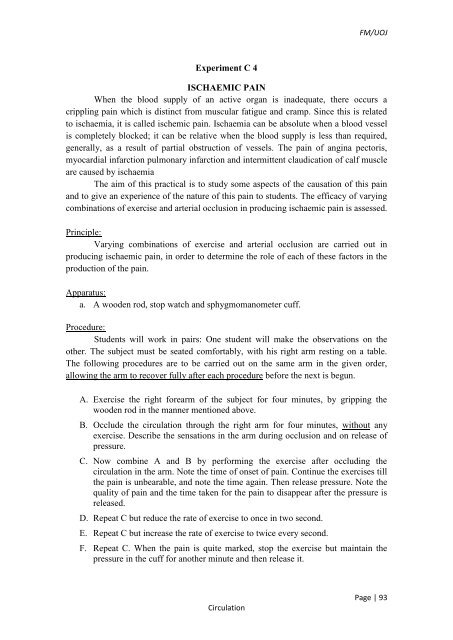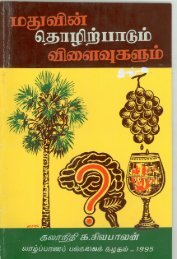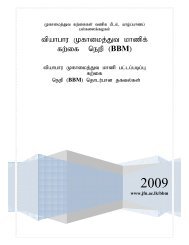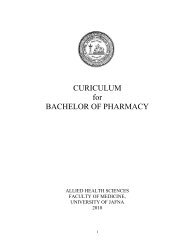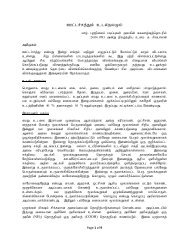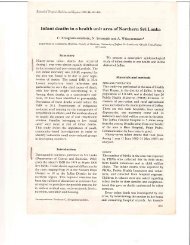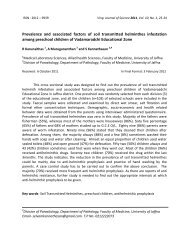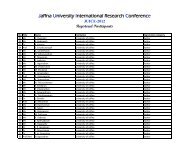MANUAL PHYSIOLOGY PRACTICAL - Repository:The Medical ...
MANUAL PHYSIOLOGY PRACTICAL - Repository:The Medical ...
MANUAL PHYSIOLOGY PRACTICAL - Repository:The Medical ...
You also want an ePaper? Increase the reach of your titles
YUMPU automatically turns print PDFs into web optimized ePapers that Google loves.
FM/UOJ<br />
Experiment C 4<br />
ISCHAEMIC PAIN<br />
When the blood supply of an active organ is inadequate, there occurs a<br />
crippling pain which is distinct from muscular fatigue and cramp. Since this is related<br />
to ischaemia, it is called ischemic pain. Ischaemia can be absolute when a blood vessel<br />
is completely blocked; it can be relative when the blood supply is less than required,<br />
generally, as a result of partial obstruction of vessels. <strong>The</strong> pain of angina pectoris,<br />
myocardial infarction pulmonary infarction and intermittent claudication of calf muscle<br />
are caused by ischaemia<br />
<strong>The</strong> aim of this practical is to study some aspects of the causation of this pain<br />
and to give an experience of the nature of this pain to students. <strong>The</strong> efficacy of varying<br />
combinations of exercise and arterial occlusion in producing ischaemic pain is assessed.<br />
Principle:<br />
Varying combinations of exercise and arterial occlusion are carried out in<br />
producing ischaemic pain, in order to determine the role of each of these factors in the<br />
production of the pain.<br />
Apparatus:<br />
a. A wooden rod, stop watch and sphygmomanometer cuff.<br />
Procedure:<br />
Students will work in pairs: One student will make the observations on the<br />
other. <strong>The</strong> subject must be seated comfortably, with his right arm resting on a table.<br />
<strong>The</strong> following procedures are to be carried out on the same arm in the given order,<br />
allowing the arm to recover fully after each procedure before the next is begun.<br />
A. Exercise the right forearm of the subject for four minutes, by gripping the<br />
wooden rod in the manner mentioned above.<br />
B. Occlude the circulation through the right arm for four minutes, without any<br />
exercise. Describe the sensations in the arm during occlusion and on release of<br />
pressure.<br />
C. Now combine A and B by performing the exercise after occluding the<br />
circulation in the arm. Note the time of onset of pain. Continue the exercises till<br />
the pain is unbearable, and note the time again. <strong>The</strong>n release pressure. Note the<br />
quality of pain and the time taken for the pain to disappear after the pressure is<br />
released.<br />
D. Repeat C but reduce the rate of exercise to once in two second.<br />
E. Repeat C but increase the rate of exercise to twice every second.<br />
F. Repeat C. When the pain is quite marked, stop the exercise but maintain the<br />
pressure in the cuff for another minute and then release it.<br />
Circulation<br />
Page | 93


